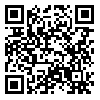
International Journal of Industrial Engineering & Production Research
Iran University of Science & Technology
Tue, Jun 10, 2025
[Archive]
Volume 24, Issue 2 (IJIEPR 2013)
IJIEPR 2013, 24(2): 123-129 |
Back to browse issues page
Download citation:
BibTeX | RIS | EndNote | Medlars | ProCite | Reference Manager | RefWorks
Send citation to:



BibTeX | RIS | EndNote | Medlars | ProCite | Reference Manager | RefWorks
Send citation to:
Sharafi A, Aminnayeri M, Amiri A, Rasouli M. Estimating the Change Point of Binary Profiles with a Linear Trend Disturbance (Quality Engineering Conference Paper). IJIEPR 2013; 24 (2) :123-129
URL: http://ijiepr.iust.ac.ir/article-1-500-en.html
URL: http://ijiepr.iust.ac.ir/article-1-500-en.html
1- M.S.C. Department of Industrial Engineering, Amirkabir University
2- Associate Prof. Department of Industrial Engineering, Amirkabir University ,mjnayeri@aut.ac.ir
3- Assistant Professor. Department of Industrial Engineering, Faculty of Engineering, Shahed University
4- M.S. student. Department of Industrial Engineering, Isfahan University of Technology
2- Associate Prof. Department of Industrial Engineering, Amirkabir University ,
3- Assistant Professor. Department of Industrial Engineering, Faculty of Engineering, Shahed University
4- M.S. student. Department of Industrial Engineering, Isfahan University of Technology
Abstract: (7980 Views)
Identification of a real time of a change in a process, when an out-of-control signal is present is significant. This may reduce costs of defective products as well as the time of exploring and fixing the cause of defects. Another popular topic in the Statistical Process Control (SPC) is profile monitoring, where knowing the distribution of one or more quality characteristics may not be appropriate for discussing the quality of processes or products. One, rather, uses a relationship between a response variable and one or more explanatory variable for this purpose. In this paper, the concept of Maximum Likelihood Estimator (MLE) applied to estimate of the change point in binary profiles, when the type of change is drift. Simulation studies are provided to evaluate the effectiveness of the change point estimator.
Keywords: binary profiles, change point, maximum likelihood estimator (MLE), statistical process control (SPC), control chart
Type of Study: Research |
Subject:
Statistical Process Control Statistical Process Control or Quality Control
Received: 2013/01/28 | Accepted: 2013/06/17 | Published: 2013/06/17
Received: 2013/01/28 | Accepted: 2013/06/17 | Published: 2013/06/17
Send email to the article author
| Rights and permissions | |
 | This work is licensed under a Creative Commons Attribution-NonCommercial 4.0 International License. |



